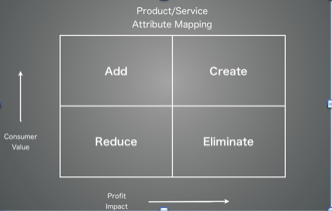Adding & Subtracting Your Way to Growth
I’ve noticed lately in the media there has been a lot of coverage around the concept of Lean Innovation.
In fact, Lean Innovation: Understanding What’s Next in Today’s Economy by Barry Cross topped the Globe & Mail’s list of business best sellers last month.
I have always been a fan of Lean Innovation as a strategic approach to innovation. It’s an approach that not only provides direction on what you should focus on but also what you should not focus on.
Do you have an understanding of Lean Innovation and what it can do for your product or service?
Let's begin with the definition and an example of Lean Innovation.
Lean Innovation is about adding value by only focusing on what customers want.
Lean Innovation can help an organization really zero in on what the customer wants and can eliminate waste in the offering. This approach can be used to re-position a product or service or to generate a new product or service.
Zipcar is a good example of lean innovation. Zipcar understood that some urbanites liked the “idea of having a car” and wanted the freedom associated with it but did not own a car due to the cost and “perceived” hassle. These same customers had negative perceptions about renting a car, including inflexible packages, pre-booking requirements, etc. Essentially these customers wanted the benefits of ownership without the cost of ownership.
So that’s what Zipcar did. They created a car sharing service that could be used hourly with a simplified reservation process. Zipcar gave urbanites only what they wanted and in the process created a new business opportunity within the car rental segment.
To create your own Zipcar success story, consider the following four steps:
1. Internal Discovery and Research
Conduct an internal review of facts and data or consider conducting research to understand customer pleasure and pain points within your category.
2. Competitive Review
Leveraging your understanding from step 1 identify key benefits and attributes of your product or service versus your competitors. Focus in on key areas of differentiation.
3. Positioning Analysis
Again, leveraging your learning from previous steps, plot your product or service attributes on a matrix. The focus should be on increasing consumer value and improving profit. Make some “tough calls” on what to reduce and eliminate versus what to add or create.

4. Idea Creation
Now that you have identified the key attributes that will create value for your customer, develop a description of the idea and bring it to life.
By leveraging these four steps you will be better positioned to address what the customer really wants and downplay or eliminate what the customer doesn’t value.
Go ahead……create your own Lean Innovation success story.
